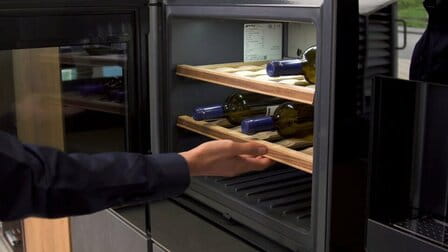Yeast is a microorganism that is commonly used in baking for leavening breads and pastries. It feeds on sugars and produces carbon dioxide as a byproduct, which causes dough to rise. However, yeast is a living organism that can be killed by excessive heat. Here is a detailed look at yeast, what temperatures kill it, and how to avoid killing yeast when baking.
What is Yeast?
Yeast is a unicellular fungus that reproduces through budding. There are over 1,500 known species of yeast, but the most common yeast used in baking is Saccharomyces cerevisiae. This species feeds on sugars and converts them into carbon dioxide and ethanol.

The carbon dioxide gas produced by yeast is what makes bread dough rise. As the yeast metabolizes sugars and produces gas, it fills air pockets in the dough, causing it to expand. This gives baked goods their soft, spongy texture.
What Temperatures Kill Yeast?
Yeast is a living organism and like all living things, it has a temperature tolerance range. In general, yeast thrives at temperatures between 75-110°F (24-43°C). Temperatures above 130°F (54°C) will kill yeast cells.
Here are some key yeast temperature guidelines:
- 75-110°F (24-43°C) - Ideal temperature range for yeast growth and leavening.
- 130-140°F (54-60°C) - Temperatures above 130°F begin to kill yeast.
- 140°F (60°C) and above - Most yeast cells are killed after prolonged exposure.
- 160°F (71°C) - Virtually all yeast is killed instantly.
So in summary, yeast will die when exposed to sustained temperatures over 130°F. Temperatures above 160°F will kill yeast instantly.
Why Heat Kills Yeast
Heat kills yeast because it causes proteins in the yeast cells to denature and break down. Enzymes and structural proteins stop functioning properly after being subjected to high heat.

As the proteins denature, they lose their shape and ability to perform their roles within the cell. This essentially cripples the yeast's cellular machinery and ability to metabolize and grow. Eventually the buildup of damaged, non-functioning proteins leads to cell death.
This is why subjecting dough to very high temperatures, such as above 130°F, will prevent the yeast from leavening the bread. The cells become damaged and die before they can produce enough carbon dioxide.
Tips to Avoid Killing Yeast When Baking
When baking bread or other yeast-leavened products, be mindful of temperatures to avoid killing the yeast prematurely. Here are some tips:
- Proof yeast between 75-110°F. This is the ideal temperature range for yeast to grow and produce gas before baking.
- Don't proof dough in excessively hot areas. Avoid proofing near heating vents, direct sunlight, or other hot spots.
- Don't overheat dough when kneading. Kneading creates friction and warms dough, so don't over-knead to the point of overheating.
- Let dough rise until doubled in size. This ensures adequate gas production before baking when heat kills the yeast.
- Avoid cooking dough directly from fridge. Let cold dough warm up before baking to prevent thermal shock.
- Don't bake bread over 430°F. Breads baked over 430°F can kill yeast before full rising/browning occurs. Bake most bread between 350-425°F.
- Add yeast to liquid less than 120°F. When activating yeast in liquid, use water between 105-115°F for optimal results.
By following these precautions, you can prevent your yeast from dying during the baking process. The key is regulating temperatures during proofing, rising and baking to keep your yeast alive.
What Happens When Yeast is Killed?
When yeast cells are killed by excessive heat during baking, it impacts the final product in the following ways:

- Poor rising - With fewer active yeast cells, less carbon dioxide is produced and dough doesn't rise properly.
- Dense texture - Bread is heavy, dense and lumpier due to lack of yeast leavening action.
- Poor flavor - Yeast contributes to flavor complexity during rising/baking which is diminished.
- Won't keep - Yeast has natural preservative effects so bread stales faster.
- Poor crumb structure - Insufficient carbon dioxide leads to low volume and uneven crumb.
- Short shelf life - Yeast produces acids that prolong shelf life so bread goes stale quickly.
Overall, killing yeast too early when baking results in bread that is dense, heavy and lacks the light, airy texture associated with properly leavened loaves. The flavor is also flat and undeveloped.
Alternatives When Yeast is Killed
If you realize yeast has been killed during the baking process, there are a couple ways to salvage the dough:
- Add more yeast - Knead in another packet of yeast after dough has cooled down. Let it proof again before baking.
Rely on chemical leaveners - Add baking powder/baking soda to provide chemical leavening instead.

- Use dough as flatbread - Don't proof again. Bake as dense flatbread like focaccia without risen loaves.
However, doughs that have substantial yeast death may never rise properly. It's usually better to discard fully and start the dough over with new active yeast.
Be sure to adjust your process to avoid killing yeast on the second attempt. Letting dough adequately cool and proof yeast properly before baking can prevent yeast death.
FAQs
Q: Can yeast be revived after being killed?
A: No, yeast cells that are killed by excessive heat cannot be revived. However, you can try kneading new active yeast into the dough to provide leavening power.
Q: Can I use dough that had yeast killed in it?
A: Dough with significant yeast death can still be baked but it will be dense and flat. It's best to start over with new yeast unless you intend to bake it as a flatbread.
Q: Is there a way to test if yeast is still active?
A: You can test yeast by dissolving a small amount in warm water with sugar. If it foams and bubbles within 5-10 minutes, it is still active. No bubbling means the yeast is no longer viable.
Q: What temperature does yeast start dying at?
A: Yeast begins dying at sustained temperatures above 130°F (54°C). Approaching 160°F, yeast cells are instantly killed. Ideal proofing range is 75-110°F (24-43°C).
Q: Should all yeast doughs be baked above 400°F?
A: No, most yeast breads and pastries should be baked between 350-425°F to prevent killing yeast before full rising occurs. Baking above 430°F can damage yeast prematurely.
Conclusion
Yeast is essential for leavened baked goods but delicate to work with. Temperatures above 130°F begin killing yeast cells by denaturing proteins. Once substantial yeast death occurs, dough will not rise or bake properly. Prevent yeast death by regulating temperatures during proofing, kneading and baking. With the proper handling, your yeast will produce light and airy baked goods.












